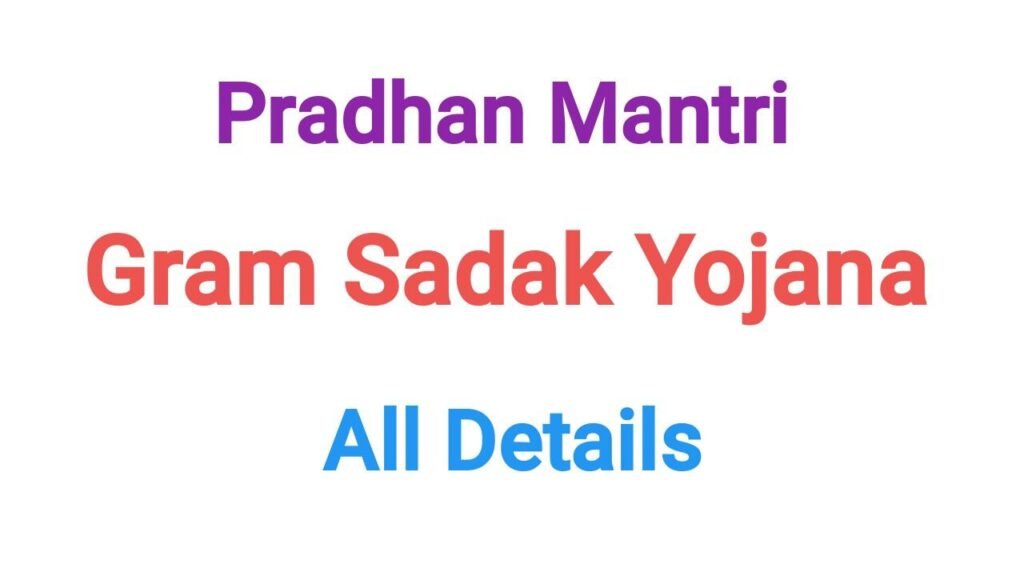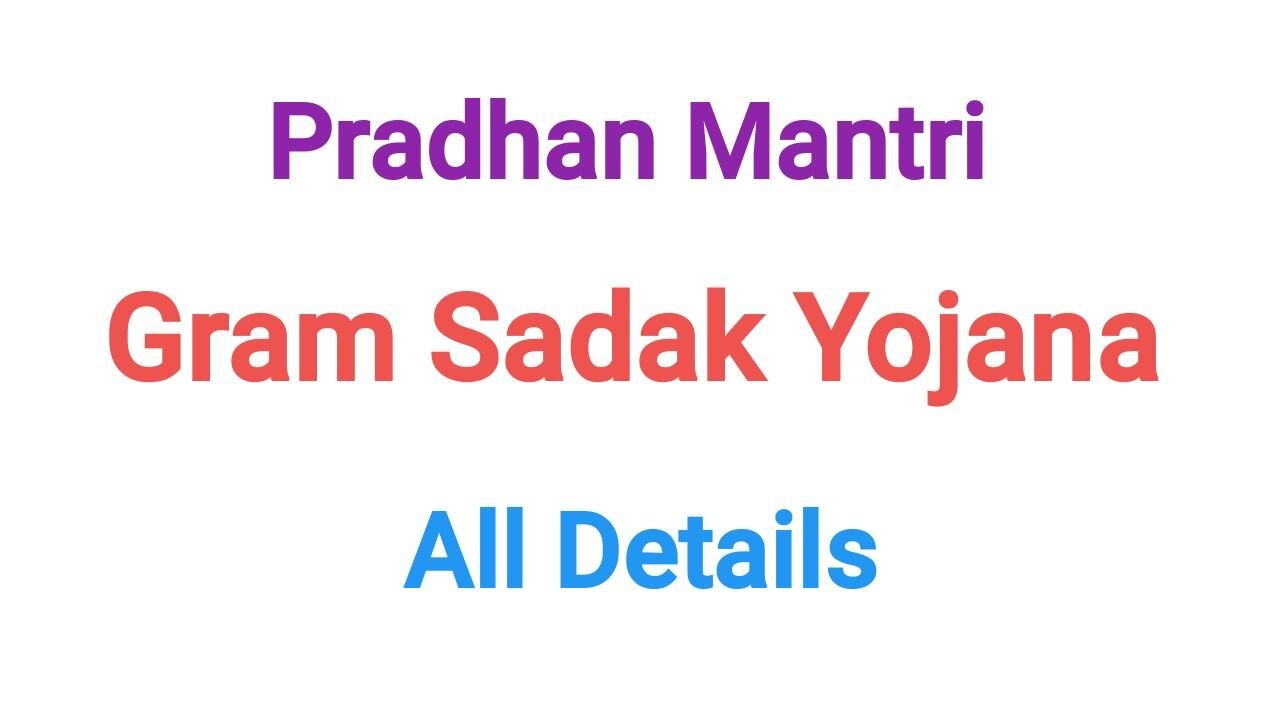India is a country where villages are the basis of our culture and economy. About 60% of the country’s population still lives in villages, and the development of these villages is very important for the progress of the country. But many villages still lack paved roads, due to which people are not able to reach the cities easily. To go to the market, school, hospital or the nearest city, one has to walk on unpaved roads or footpaths, which wastes both time and effort. To solve this problem, the Government of India launched the Pradhan Mantri Gram Sadak Yojana (PMGSY). This scheme is a big step to connect rural India with paved roads and make the lives of the people of villages easier. Let us talk about this scheme in detail in this article, what it is, what is its purpose, and how it is changing the villages.
What is the Pradhan Mantri Gram Sadak Yojana?
Pradhan Mantri Gram Sadak Yojana was launched on 25 December 2000 on the birthday of the then Prime Minister Atal Bihari Vajpayee. The main objective of this scheme is to connect villages to nearby cities and markets by laying a network of paved roads in rural areas. Its goal is to have an all-weather paved road to every village where 500 or more people live (more than 250 in hilly and tribal areas).
This scheme is not limited to just building roads. Its purpose is to provide better transport facilities to the people of the village, so that they can easily reach the market, school, hospital and other important places. This scheme runs in collaboration with the central and state governments, and is overseen by the Ministry of Rural Development. Under this scheme, special attention is paid to the construction, maintenance and quality of roads, so that these roads remain useful for a long time.
Main objectives of the scheme
The Pradhan Mantri Gram Sadak Yojana has certain objectives that make it an important step towards rural development. Let us have a look at them:
- Rural connectivity: The biggest goal of the scheme is to connect every village with paved roads. This will enable the villagers to reach the cities easily, and their daily life will become easier.
- Economic development: With the construction of roads, villagers can easily take their crops and goods to the market. This increases their income and strengthens the local economy.
- Access to education and health: Due to paved roads, children can easily go to school and college. Also, sick people can be taken to the hospital on time, which improves health services.
- Employment opportunities: Local people get jobs during road construction. In addition, the construction of roads promotes small businesses in the village, such as shops, transport services, and sales of local products.
- Social inclusion: Roads connect villages to the mainstream, allowing rural people to take advantage of the facilities and opportunities of cities. This reduces social and economic inequality.
How does the scheme work?
A systematic approach has been adopted to implement the Pradhan Mantri Gram Sadak Yojana. It works in several phases:
- Selection of villages: First, those villages are identified which do not have paved roads. Priority is given to those villages which have a population of more than 500 (more than 250 in hilly and tribal areas).
- Planning and survey: A detailed plan is prepared for each village, which determines the length, cost and method of construction of the road, keeping in mind the local geographical conditions and needs.
- Construction and quality: Roads are constructed using modern technology and standards. It is ensured that the roads are all-weather passable and long-lasting. Special teams have been formed to check the quality.
- Maintenance: After the construction of the road, its maintenance is also necessary. For this, there is a provision of maintenance for five years in the scheme, so that the roads do not deteriorate. The local administration and village panchayats take care of it.
- Monitoring and evaluation: Committees have been formed at the district and state levels to monitor the progress of the scheme. There is also an online system (OMMAS) through which information on the status and progress of roads is available.
Progress so far
Since the launch of the Pradhan Mantri Gram Sadak Yojana, paved roads have reached millions of villages in the country. By July 2025, about 7.5 lakh kilometers of roads have been built under this scheme, and about 99% of the eligible villages have been connected with paved roads. In many states like Uttar Pradesh, Bihar, Madhya Pradesh, Rajasthan and Odisha, this scheme has changed the picture of villages.
Apart from this, special attention has also been given to hilly and tribal areas. For example, roads have been built in areas like North-Eastern states, Jammu and Kashmir and Himachal Pradesh despite difficult geographical conditions. In the third phase of the scheme (PMGSY-III), existing roads
impact on people’s lives
The impact of Pradhan Mantri Gram Sadak Yojana is not limited to just building roads. It is improving the lives of village people in many ways:
- Easy transportation: Due to paved roads, people can easily go to market, school and hospital. Earlier, one had to walk for hours, now one can reach there in less time by bus or other vehicles.
- Economic development: Roads have made it easier for farmers to transport their produce to market. This has increased their income, and local produce is getting better prices. Small businesses, such as shops and transport services, are also growing.
- Empowerment of women: Roads have made it easier for women to reach markets, schools and health centres. This is saving their time, and they are finding new opportunities for themselves.
- Social connectivity: Roads are connecting villages to cities, allowing rural people to take advantage of the facilities and opportunities of cities. This is reducing social and economic inequality.
- Education and health: Children are now able to go to school regularly because roads are safe and convenient. Sick people can be taken to hospital on time, which has improved health services.

Challenges and Solutions
Like every big scheme, the Pradhan Mantri Gram Sadak Yojana also faces some challenges. In some areas, geographical conditions, such as mountains, forests or flood-prone areas, make road construction difficult. Apart from this, in some places there have been problems due to lack of funds, lack of local cooperation or maintenance.
The government has taken several steps to deal with these problems. For example, special technology and resources are being used for difficult areas. Emphasis is being laid on regular inspection and maintenance to maintain the quality of roads. Also, campaigns are being run to make local people aware about the scheme.
Read Also : Pradhan Mantri Rashtriya Krishi Vikas Yojana: A ray of hope for farmers
conclusion
Pradhan Mantri Gram Sadak Yojana is a revolutionary step for rural India. This scheme is not only connecting villages with concrete roads, but also making the lives of people easier, safer and prosperous. Roads are not just paths of mud and stone; they are paths of development, prosperity and opportunities. If this scheme continues to progress in this way, the day is not far when every village in India will be connected not only with roads but also with progress and prosperity. Come, let us all support this scheme and take our villages on the path of progress. Because only when villages are connected, the country will become stronger.






